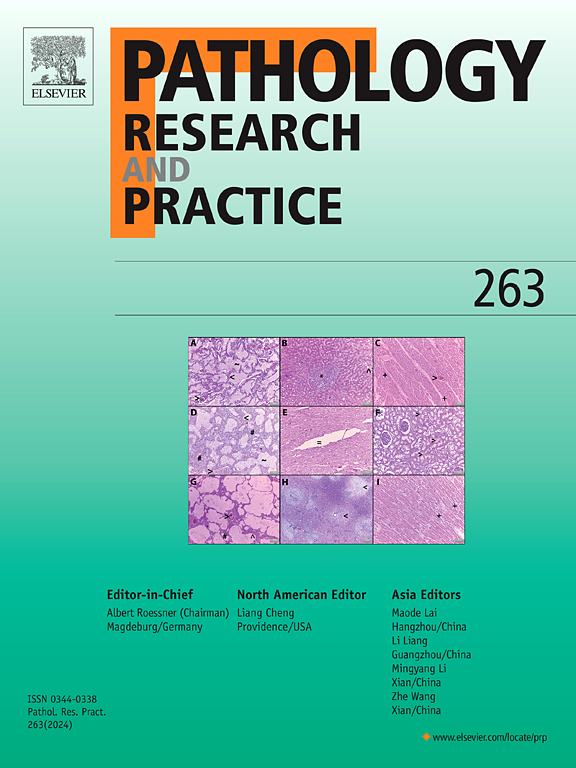FAM72 family members serves as prognostic biomarker in liver hepatocellular carcinoma
IF 2.9
4区 医学
Q2 PATHOLOGY
引用次数: 0
Abstract
Background
Liver hepatocellular carcinoma (LIHC) is a common cancer with poor prognosis. The FAM72 gene family enhances neuronal self-renewal, potentially increasing tumor formation, but its functional and predictive relevance in LIHC remains unclear. We sought to investigate the function of the FAM72 gene family in LIHC in the present study.
Methods
We acquired TCGA-LIHC expression and phenotypic data as well as extensive clinicopathologic information from the UCSC Xena Database (https://xenabrowser.net/datapages/) database. We analyzed the association between FAM72 gene family expression in LIHC and patient prognosis and immune infiltration; Genomic and functional enrichment analysis for FAM72 genes was analyzed. Finally, Western blot method, quantitative real-time polymerase chain reaction and CCK8 detection and cell invasion experiments were used to verify the effect of FAM72A expression on LIHC.
Results
The expression of FAM72 gene family is different between LIHC and normal liver tissues. The expression of FAM72 gene family increased with increasing grading of LIHC tissues. The expression of FAM72 gene family was significantly reduced in LIHC stage IV. LIHC tissues expressed significantly more FAM72 genes than did normal tissues at the T stage (p < 0.001,). which has a good value in the diagnosis of LIHC (AUC greater than 0.85), and was strongly linked with the tumor stage in LIHC. Based on Cox analysis of univariate data, the FAM72 gene family was associated with poor overall survival (OS) in patients with LIHC. Analysis of multifactorial Cox data revealed an independent relationship between FAM72 expression and OS. Increased FAM72 gene expression is associated with poor survival rates and immune cell infiltration. Methylation levels were associated with the prognosis of patients with LIHC. Ultimately, our findings revealed that FAM72A is abundantly expressed in LIHC cells, facilitating proliferation and metastasis.
Conclusion
These findings indicate that the FAM72 gene family is a potential molecular marker for poor prognosis in LIHC, providing additional insights into the development of therapeutic approaches and prognostic markers.
求助全文
约1分钟内获得全文
求助全文
来源期刊
CiteScore
5.00
自引率
3.60%
发文量
405
审稿时长
24 days
期刊介绍:
Pathology, Research and Practice provides accessible coverage of the most recent developments across the entire field of pathology: Reviews focus on recent progress in pathology, while Comments look at interesting current problems and at hypotheses for future developments in pathology. Original Papers present novel findings on all aspects of general, anatomic and molecular pathology. Rapid Communications inform readers on preliminary findings that may be relevant for further studies and need to be communicated quickly. Teaching Cases look at new aspects or special diagnostic problems of diseases and at case reports relevant for the pathologist''s practice.

 求助内容:
求助内容: 应助结果提醒方式:
应助结果提醒方式:


